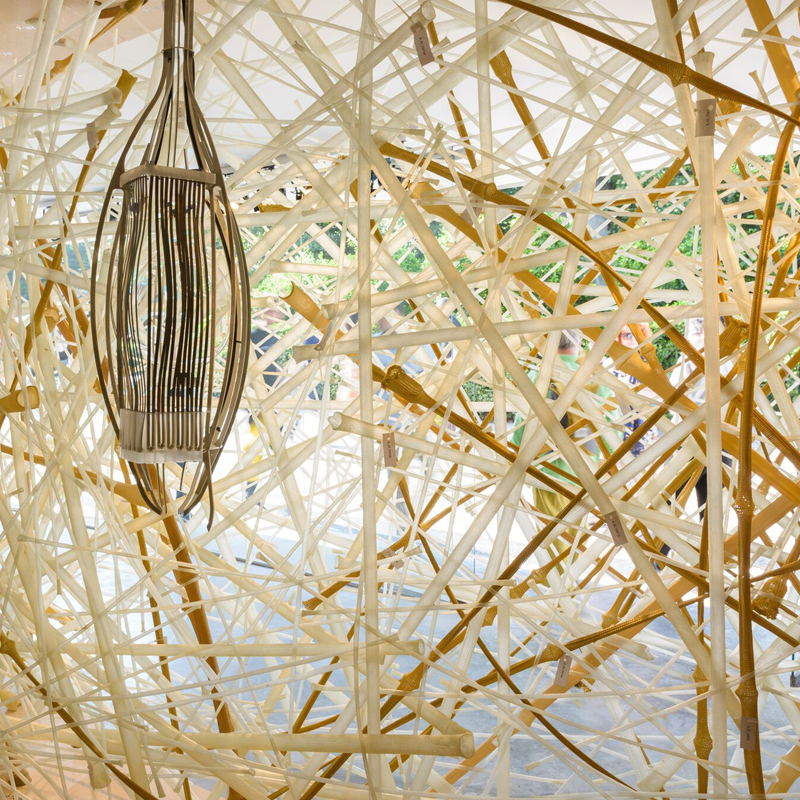Venice Biennale 2016: “LifeObject”
Exploring the synergy between architecture and biology at the Israeli Pavilion


by Ari Samuel
In tune with this year’s “Reporting from the Front” theme commissioned by Venice Biennale Chief Curator Alejandro Aravena, the Israel Pavilion unveiled “LifeObject,” an immersive and stimulating exhibition analyzing the synergy between the worlds of architecture and biology and the future possibilities and advancements that lie in their combination.

At the center of the Pavilion stands the physical “LifeObject,” a massive man-made edifice composed of synthetic materials and modeled on the 3D foundation of a bird’s nest, a natural biological structure built to withstand shock and trauma. Such a theme is key to Israel which has adapted its own societal structure and spatial design amidst a history of various geo-political conflicts. The “LifeObject” structure and its additional seven different scenarios throughout the Pavilion offer a window into the future of biological application in architecture, in which buildings and artificial structures can adapt to their inhabitants, climate, and external forces.

The curatorial team along with seven teams of academics, scientists and architects came together to tackle real-life, world-wide architectural and environmental crises affecting the globe and various sectors within Israeli society. These architectural-scientific partnerships created innovative ways of applying biological developments into architectural design. Among the cross-pollination of ideas are employing cancer treatment and research to tackle dire urban densification in Tel Aviv, applying Nobel Prize-winning chemist Dan Shechtman’s crystallography research to gather critical urban planning information on the city of Haifa’s low-income neighborhoods, harnessing natural materials to compose green shelters for Israel’s nomadic Bedouin communities and applying prenatal procedures to save and regenerate the dying Dead Sea.

Enthusiasts of the “LifeObject” exhibition can learn more about the specific works involved and purchase the 174-page book online.
Images courtesy of Dacian Groza












